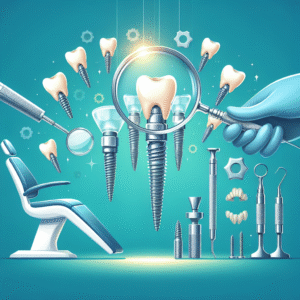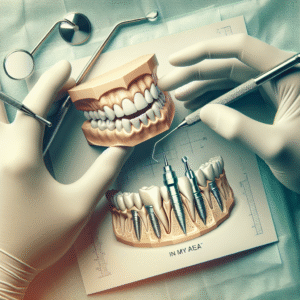All-on-4 Dental Implant Procedure Outcomes
Dental implant technology has revolutionized the way we approach tooth replacement, offering patients durable, natural-looking solutions for missing teeth. Among the most advanced techniques is the All-on-4 dental implant procedure, which provides a full-arch restoration with just four strategically placed implants. This innovative approach has gained popularity due to its efficiency, reduced recovery time, and high success rates. In this article, we will explore the outcomes of the All-on-4 procedure, its benefits, and how it compares to alternatives like Full-Arch Dental Implants, Teeth-in-a-Day / Same-Day Implants, Implant-Supported Dentures, Zygomatic Implants, and cases requiring Bone Grafting for Dental Implants.
Understanding the All-on-4 Dental Implant Procedure
The All-on-4 technique is designed to replace an entire arch of teeth using only four dental implants. Two implants are placed vertically in the front of the jaw, where bone density is typically higher, while the remaining two are angled at 45 degrees in the posterior region. This angulation maximizes contact with available bone, often eliminating the need for bone grafting for dental implants, even in patients with significant bone loss.
Key Benefits of All-on-4 Implants
- Immediate Functionality – One of the standout advantages is the Teeth-in-a-Day / Same-Day Implants concept. Patients can leave the clinic with a fully functional set of teeth on the same day as surgery.
- Minimally Invasive – Compared to traditional methods requiring six to eight implants per arch, All-on-4 reduces surgical complexity.
- Cost-Effective – Fewer implants mean lower overall costs while still providing stability comparable to Full-Arch Dental Implants.
- Bone Preservation – The strategic placement helps stimulate bone growth, preventing further deterioration.
Comparing All-on-4 to Other Implant Solutions
Full-Arch Dental Implants vs. All-on-4
Traditional Full-Arch Dental Implants typically involve placing six to eight implants per arch, which may be necessary for patients with exceptional bite force demands. However, All-on-4 offers comparable stability for most patients with fewer implants, reducing surgical time and expense.
Teeth-in-a-Day / Same-Day Implants
The All-on-4 procedure is a prime example of Teeth-in-a-Day / Same-Day Implants, allowing patients to receive temporary prosthetics immediately after implant placement. After a healing period of a few months, a permanent prosthesis is fitted.
Implant-Supported Dentures
While Implant-Supported Dentures also provide a secure alternative to traditional dentures, they often require more implants and may not offer the same level of permanence as All-on-4. However, they remain a viable option for patients who prefer a removable solution.
Zygomatic Implants for Severe Bone Loss
In cases of extreme bone atrophy where traditional implants (including All-on-4) are not feasible, Zygomatic Implants may be used. These longer implants anchor into the zygomatic (cheek) bone, bypassing the jaw entirely. While effective, they are more complex and typically reserved for severe cases.
The Role of Bone Grafting
For patients with insufficient bone density, bone grafting for dental implants may be required before traditional implant placement. However, All-on-4 often eliminates this need due to its strategic angulation and utilization of existing bone structure.
Clinical Outcomes and Success Rates
Research indicates that All-on-4 implants boast success rates exceeding 95% over a 10-year period. Key factors influencing outcomes include:
- Osseointegration – Proper fusion between the implant and bone is critical.
- Prosthetic Fit – A well-designed prosthesis ensures even force distribution.
- Oral Hygiene – Maintaining cleanliness around implants prevents peri-implantitis.
Patient Satisfaction
Most patients report significant improvements in:
- Chewing efficiency (nearly 85% restoration of natural bite force).
- Speech clarity, as the prosthesis feels more natural than removable dentures.
- Aesthetic appearance, with customized teeth matching natural gum contours.
Potential Complications and Mitigation
While rare, complications may include:
- Implant Failure – Typically due to poor osseointegration or infection.
- Prosthetic Wear – Over time, the prosthetic may require adjustments or replacement.
- Gum Irritation – Proper hygiene minimizes this risk.
Regular follow-ups with a dental professional ensure long-term success.
Conclusion
The All-on-4 dental implant procedure offers a transformative solution for patients seeking full-arch restoration with minimal downtime. Its advantages over Full-Arch Dental Implants, compatibility with Teeth-in-a-Day / Same-Day Implants, and reduced need for bone grafting for dental implants make it a preferred choice. For those with severe bone loss, alternatives like Zygomatic Implants remain available. Ultimately, All-on-4 provides a balance of functionality, aesthetics, and affordability, making it a leading option in modern restorative dentistry.
Frequently Asked Questions
FAQ: All-on-4 Dental Implant Procedure Outcomes
1. What are the success rates of the All-on-4 dental implant procedure?
The All-on-4 dental implant procedure has a high success rate, typically around 95-98%, when performed by an experienced dental professional. Proper care and maintenance further improve long-term outcomes.
2. How long does it take to recover after an All-on-4 procedure?
Most patients can resume normal activities within a few days, but full recovery and osseointegration (bone fusion) usually take 3-6 months. Temporary prosthetics are provided during the healing phase.
3. Are All-on-4 implants permanent?
While the implants themselves are designed to last a lifetime, the prosthetic teeth may need replacement after 10-15 years due to wear and tear, depending on oral hygiene and usage.
4. What are the common side effects or risks of the All-on-4 procedure?
Common side effects include swelling, bruising, and mild discomfort, which subside within a few days. Risks, though rare, may include infection, implant failure, or nerve damage, but these are minimized with proper technique and aftercare.




